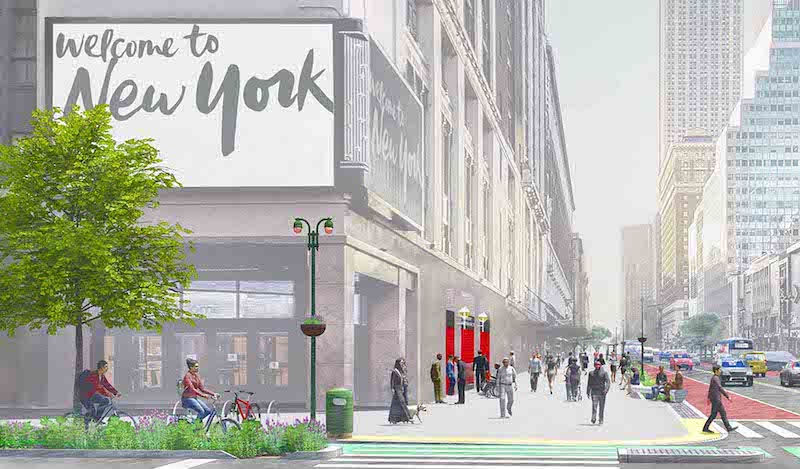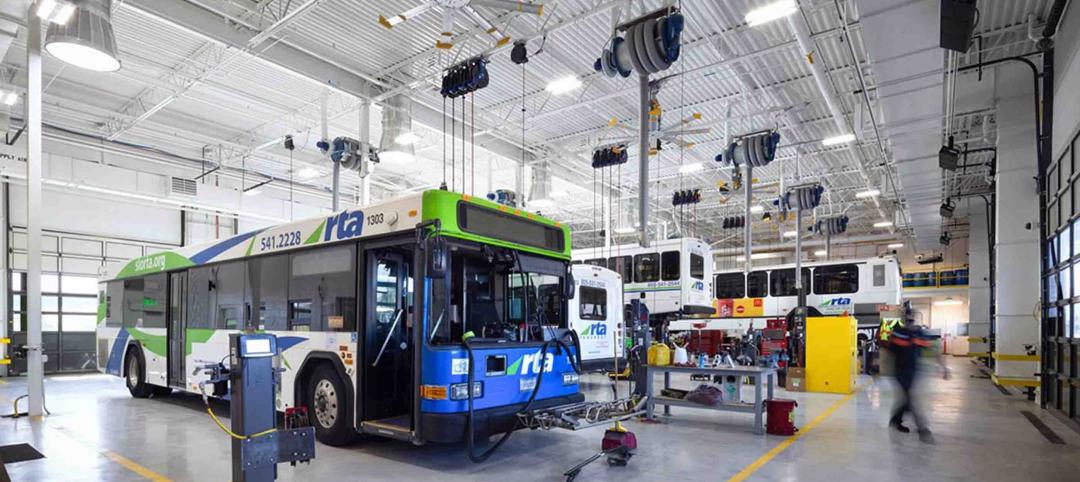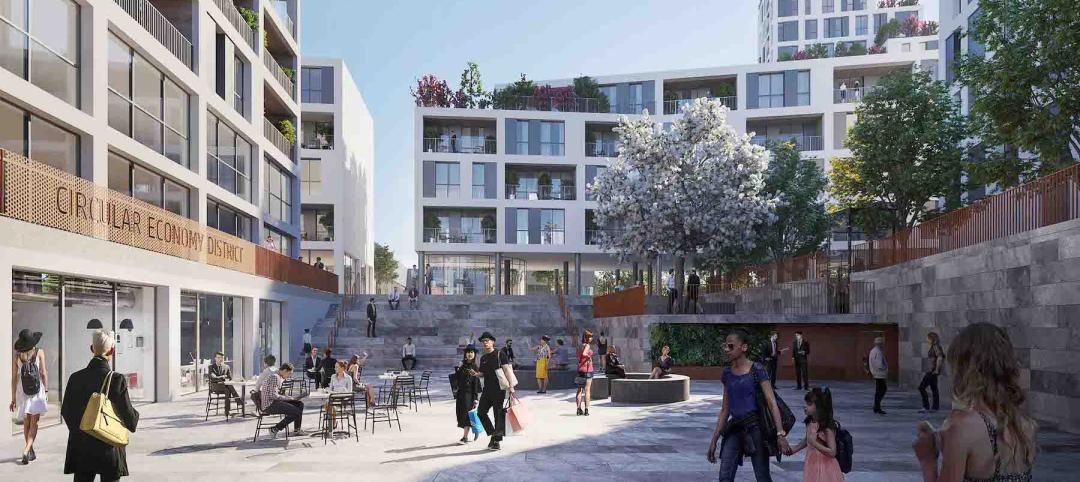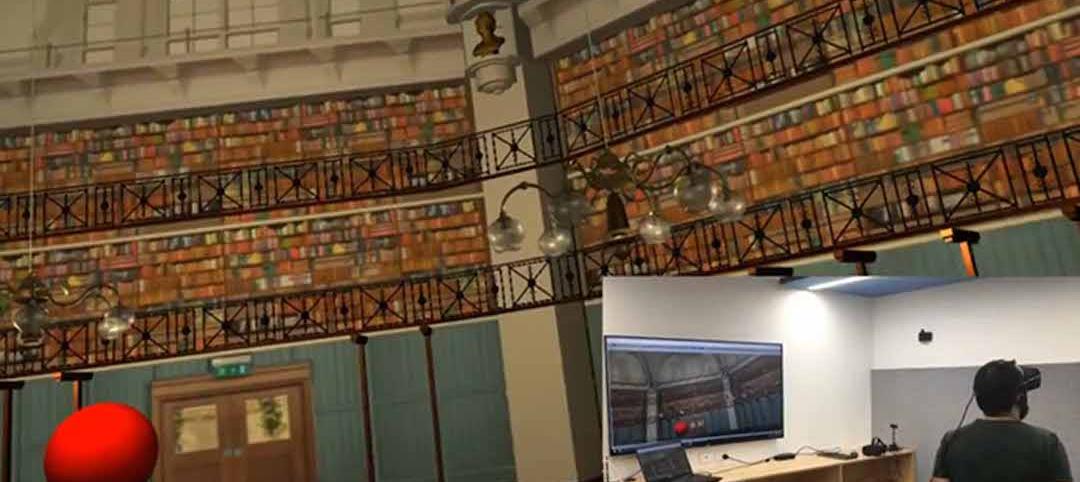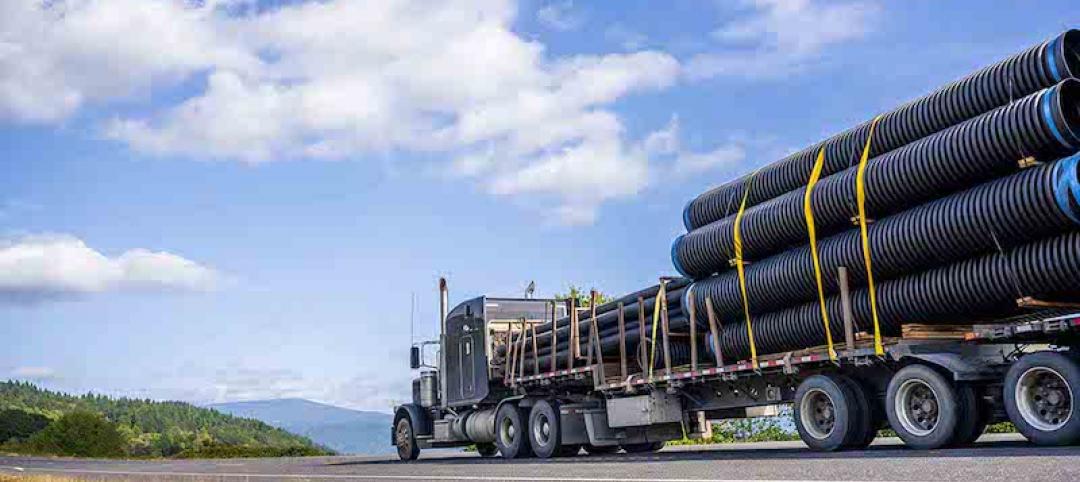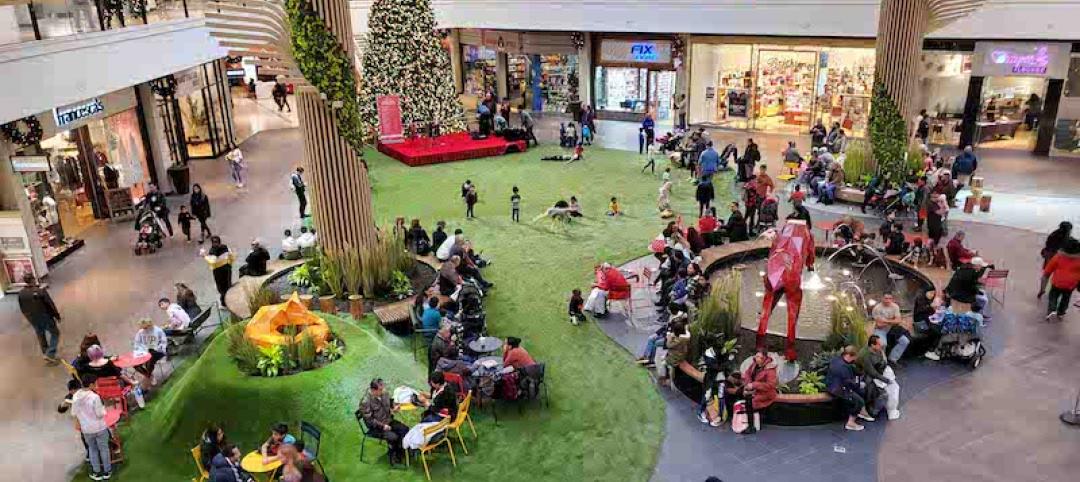Stay-at-home orders during COVID-19 have led to at least one welcome side effect: cities around the world saw dramatic decreases in traffic. As cities work toward carbon emissions reduction goals (80% reduction by 2050 in New York, carbon neutral by 2050 in Los Angeles and Boston), they will need to effect substantial change within the transportation sector.
Transportation is responsible for nearly 30% of carbon emissions in the US, and passenger vehicles account for more than half of those emissions. However, the COVID-19 pandemic has also allowed us to imagine—more vividly than ever—a car-lite future. What COVID has shown us is that without traffic, city streets are nice—and that has big implications for livability, sustainability, and carbon emissions.

What does fewer cars give us?
Cleaner air: Photos from around the world showed cities including Los Angeles, Beijing, and New York without the ever-present layer of smog.
Quiet: People in New York were taking videos of birds singing, having never been able to hear them before.
Space: Formally and informally, people were taking back streets to jog, play, sit, and dine.
Cooler streets: Heat waves aside, fewer cars mean less waste heat from engines.
Safe micromobility: Feeling safer, more people were riding bikes and walking for transportation in the city.
Less carbon: To achieve a 5% reduction in carbon emissions from vehicles in New York City, we must reduce vehicle miles traveled by nearly 250 million miles.
So how do we sustain this new paradigm in cities that are not on stay-at-home orders, and what is our role as designers in that future? In addition to the policy initiatives, economic incentives, and behavior changes that will help drive the transition, we can design for the mode shift.
We need not wait for a big technology-driven transition such as wide adoption of electric vehicles to reduce carbon. We can shift modes—swapping cars for buses, bikes, or walking—to help us achieve carbon reductions now and foster the pleasant street life we have seen over the last several months. But right now, cities are designed around and for the car. To make mode shifts happen at the scale we need, we must prioritize other modes and make them the safest, most fun, most efficient, and most desirable way to move.
This is exactly what we as engineers, planners, and designers can do for our cities.
 Midtown District Plan for a confidential client in New York, New York.
Midtown District Plan for a confidential client in New York, New York.
Electrification is important but not the panacea
When discussing carbon and transportation, we must address electrification upfront. Vehicle electrification is an area of important investment right now. Manufacturers are developing new electric models, charging stations are proliferating, and new infrastructure bills will incentivize a major shift in propulsion systems.
A recent memorandum of understanding signed by 15 states in the Northeast seeks to advance electrification of trucks and buses. But while electric vehicles and a clean electric grid will reduce carbon emissions, we still have a basic geometry problem of too many cars that make our streets unsafe for other users and unpleasant for everyone. Furthermore, electrification does not fully eliminate emissions as it relates to public health. Particulates from brake pad and tire wear are equally responsible for the health problems that mushroom around congested highways and heavy traffic areas. Shared mobility, whether it be electric or automated, is the future we must work toward through policy and design.
Invest in transit
The counterpart to a car-lite city is a mobility-rich city. While seeking to reduce car dependency, we must also improve other mobility options. But with transit ridership down across the US, transit agencies are facing critical revenue gaps. The tendency in many municipalities is to cut service to plug the hole, but that only serves to drive more people away from transit as it becomes inconvenient or unreliable.
To increase ridership, decrease car dependence, and reduce carbon emissions, we need to invest in transit—buses, subways, rail—not cut service. Transit has been essential to the ongoing functioning of our cities through this pandemic, with no clear evidence that it contributed to the spread of infection in New York or elsewhere. Many essential workers rely on reliable transit service; cutting service only serves to negatively impact the people who need it the most. Professionally, we can help our clients build the case for and justify investments, and personally we can advocate for change at local, state, and federal levels.
 By reallocating urban street space for non-car uses—pedestrian realm, micromobility, and green stormwater management—we facilitate the mode shifts that are necessary to meet carbon reduction goals.
By reallocating urban street space for non-car uses—pedestrian realm, micromobility, and green stormwater management—we facilitate the mode shifts that are necessary to meet carbon reduction goals.
Design streets for the car-lite, mobility-rich future we can now easily imagine
In addition to more and better transit, street design plays a significant role in mode shifting. American city streets from New York to Phoenix are designed primarily for vehicles at the peril and detriment of other modes. Wide travel lanes, intersection signals, and vehicle storage (i.e., parking) prioritize private vehicles and leave little room for rapid transit, bike lanes, and the pedestrian realm. And prioritizing cars also creates unsafe conditions for biking and walking, discouraging the use of these modes for people who would use them if they were safe. When we begin to view walking and biking as real transportation options, not just recreation, we begin to see the importance of reallocating street space to accommodate the mode shifts we need at the scale we need. Space is one issue, but it is also about the experience.
The pandemic has pushed us to reimagine our priorities for mobility corridors and public space, while giving us the opportunity to look at new approaches. As engineers, planners, and designers, we have a role to play in creating an atmosphere that makes car-free modes not just feasible but attractive and enjoyable as well. Everything from building facades and frontages to street trees and green infrastructure contributes to a public realm that will stimulate more carbon-free or carbon-lite options such as biking, walking, or other forms of micromobility.
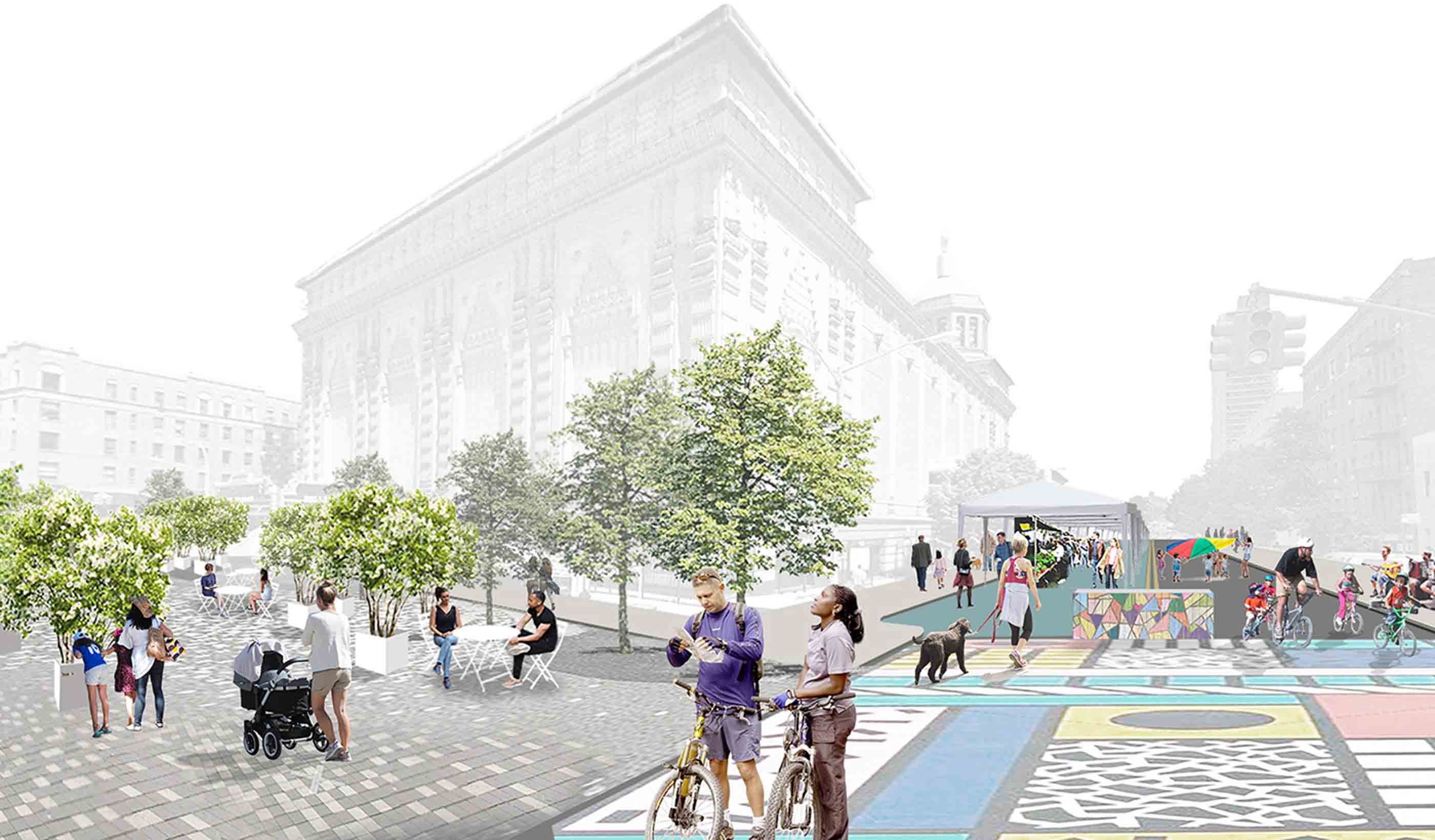 A conceptual rendering for Neighborhoods Now of an improved public realm in Plaza de las Americas, Washington Heights, New York City.
A conceptual rendering for Neighborhoods Now of an improved public realm in Plaza de las Americas, Washington Heights, New York City.
Finding autonomy, equity, and freedom
The pandemic has been devastating for many, especially our most vulnerable communities. We must use this tragedy to accelerate progress toward a better life for all.
Part of our job as designers is to help our clients envision the future, and COVID-19 has given all of us a sneak peek at a future with fewer cars. It has also shown us how quickly we are capable of change. The challenge moving forward is to realize a new vision that takes cues from these lessons: walkable, bikeable, transit-rich cities as equitable cities. As resilient cities. As healthy and accessible cities.
And this vision is as applicable to big, dense places as it is to small cities and suburbs. Many people fear a car-lite future because they feel it takes away their autonomy. But a car-lite, mobility-rich city is a place where more mobility options and nice, safe streets create true autonomy, equity, and freedom.
More from Author
Stantec | Apr 18, 2024
The next destination: Passive design airports
Today, we can design airports that are climate resilient, durable, long-lasting, and healthy for occupants—we can design airports using Passive House standards.
Stantec | Mar 18, 2024
A modular construction solution to the mental healthcare crisis
Maria Ionescu, Senior Medical Planner, Stantec, shares a tested solution for the overburdened emergency department: Modular hub-and-spoke design.
Stantec | Nov 20, 2023
8 strategies for multifamily passive house design projects
Stantec's Brett Lambert, Principal of Architecture and Passive House Certified Consultant, uses the Northland Newton Development project to guide designers with eight tips for designing multifamily passive house projects.
Stantec | Apr 10, 2023
Implementing human-centric design in operations and maintenance facilities
Stantec's Ryan Odell suggests using the human experience to advance OMSF design that puts a focus on wellness and efficiency.
Stantec | Jul 6, 2022
5 approaches to a net zero strategy that communities can start right now
Whether your community has started on a plan or is still considering net zero, now is the time for all of us to start seriously addressing climate change.
Stantec | Feb 14, 2022
5 steps to remake suburbs into green communities where people want to live, work, and play
Stantec's John Bachmann offers proven tactic for retrofitting communities for success in the post-COVID era.
Stantec | Feb 8, 2022
How gaming technology is changing the way we design for acoustics
Adding 3D sound from gaming engines to VR allows designers to represent accurate acoustic conditions to clients during design.
Stantec | Dec 15, 2021
EV is the bridge to transit’s AV revolution—and now is the time to start building it
Thinking holistically about a technology-enabled customer experience will make transit a mode of choice for more people.
Stantec | Sep 3, 2021
Passports to a net-zero carbon future
How materials passports can help designers achieve social value and net-zero carbon.
Stantec | Aug 25, 2021
The mall of the future: Less retail, more content
For the mall to survive, it will need to embrace nontraditional uses and “messy vitality.” Here’s how to do it.

